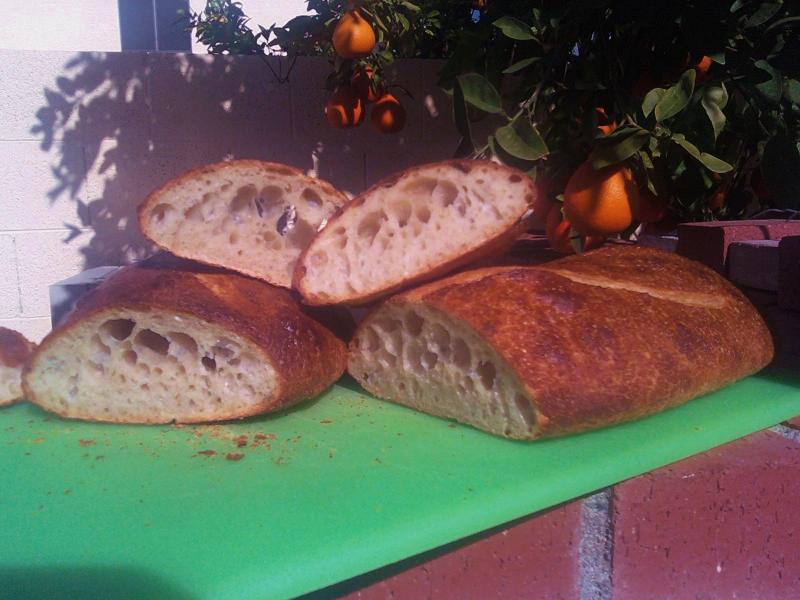 I recieved my new delivery from King Arthur Flour the other day so decided to use some of my new ingredients and threw together a sourdough bread with eggs and corn flour (it's supposed to be finer and less gritty than corn meal). I also decided to add some Barley flour which I find adds a nice nutty flavor to the bread. The final loaf was a little dense, but overall I was satisfied with the end result. This bread is perfect for a hearty stew or simple toast and butter or jam in the morning.
I recieved my new delivery from King Arthur Flour the other day so decided to use some of my new ingredients and threw together a sourdough bread with eggs and corn flour (it's supposed to be finer and less gritty than corn meal). I also decided to add some Barley flour which I find adds a nice nutty flavor to the bread. The final loaf was a little dense, but overall I was satisfied with the end result. This bread is perfect for a hearty stew or simple toast and butter or jam in the morning.
Ingredients
15 ounces 65% Hydration Starter Refreshed
4 ounces Barley Flour (I use King Arthur Flour)
15.5 ounces European Style Flour from KAF (or Bread Flour)
2 ounces Corn Flour (King Arthur Flour)
2 Eggs beaten
1 Tablespoon Freeze Dried Shallots or fresh if preferred
14 ounces Luke warm water, 90 - 95 degrees Fahrenheit
2 1/2 Teaspoons Sea Salt
2 1/4 Teaspoons Instant Yeast (you can omit the yeast if desired and let the dough sit for 1 1/2 hours to 2 hours before refrigerating)
Directions
Using your stand mixer or by hand, mix the water with the starter to break up the starter.
Add the flours, salt, yeast (if using), and mix on the lowest speed for 2 minutes. Let rest for 5 minutes.
Mix for 4 minutes more on medium speed, adding more flour if necessary to produce a slightly sticky ball of dough.
Remove dough to your lightly floured work surface and need for 1 minute and form into a ball.
Leave uncovered for 10 minutes.
Do a stretch and fold and form into a ball again and cover with a clean moist cloth or oiled plastic wrap.
After another 10 minutes do another stretch and fold and put into a lightly oiled bowl that has enough room so the dough can double overnight.

Put in your refrigerator immediately for at least 12 hours or up to 3 days.
When ready to bake the bread, shape the dough as desired being careful not to handle the dough too roughly so you don't de-gas it. (If you did not use yeast, let it sit in your bowl for 2 hours before shaping).
Place it in your bowl, banneton or shape into baguettes.

Let it sit at room temperature for 2 hours covered with oiled plastic wrap or a wet cloth.
Pre-heat oven with baking stone (I use one on bottom and one on top shelf of my oven), to 500 degrees F.
Slash loaves as desired and place empty pan in bottom shelf of oven.
Pour 1 cup of very hot water into pan and place loaves into oven.
Lower oven to 450 Degrees and bake for 25 - 35 minutes until bread is golden brown and internal temperature reaches 200 degrees.
Let cool on cooling rack and enjoy!
This post has been submitted to the Yeast Spotting Site here: http://www.wildyeastblog.com/category/yeastspotting/.
Please feel free to visit my other blog for more of my recipes at http://www.mookielovesbread.wordpress.com

- Crumb Shot

























